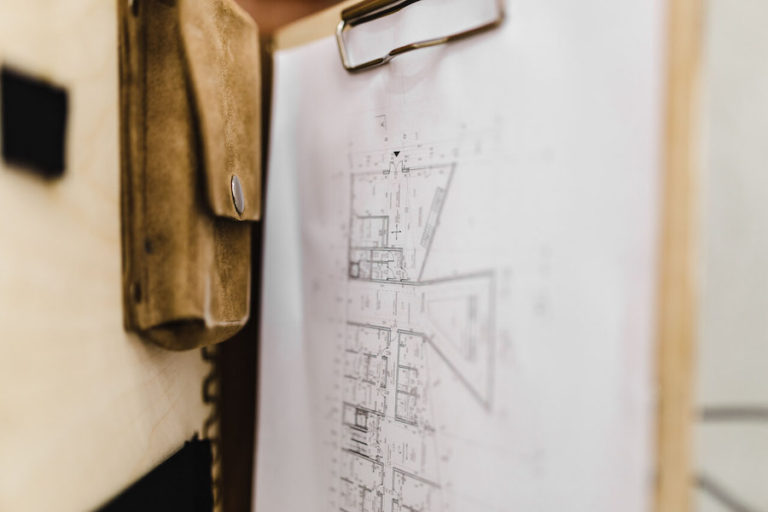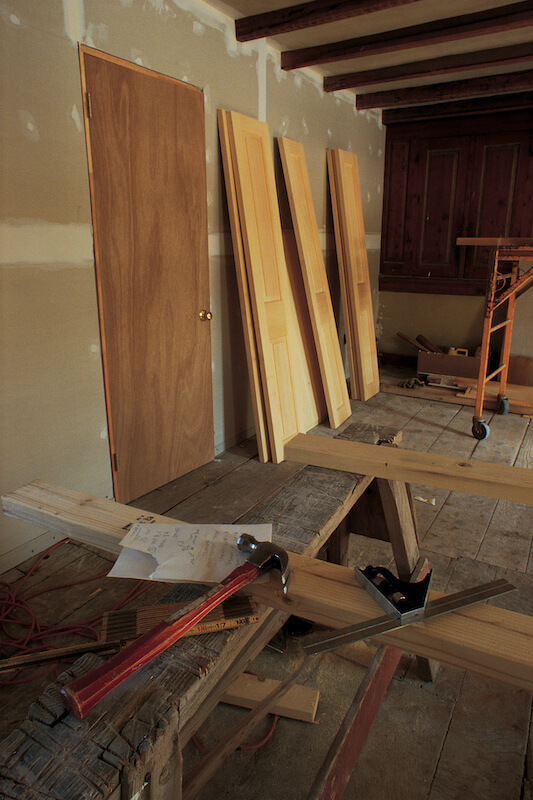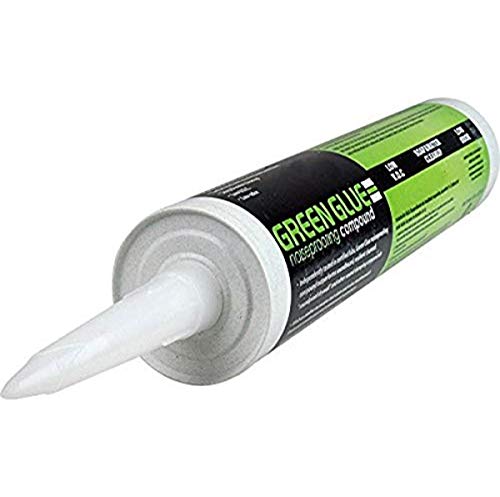Cheapest way to soundproof a basement ceiling
It’s three AM and you’re sound asleep in your basement apartment when a sudden noise from above wakes you from your peaceful slumber.
Are those normal footsteps or has an elephant moved upstairs?
Maybe it’s the sound of your neighbor blasting music or moving furniture, yet all you know for certain is that it’s robbing you of your sleep.
It doesn’t have to, though, as there are many ways to soundproof a basement ceiling that don’t necessarily cost an arm and a leg.
Even people who don’t consider themselves to be the least bit handy with tools need not worry, as many solutions don’t require any construction.
Just as important as soundproofing your room, you should look into soundproofing your basement too.
If you’re tired of your tap dancing neighbors disturbing the peace day after day and night after night, keep reading to find out how to take back your peace of mind without even breaking a sweat.
I am an Amazon Affiliate, which means I will make a commission if you purchase something through the links here. There are NO extra cost to you at all.
Related: How to soundproof a garage

Contents: Skip to section
Why soundproof your basement ceiling?
Basements can often be loud places with a lot of impact and airborne noises coming through the ceilings, especially if you have no control over the room above yours.
This is because the layers between floors rarely have good material for noise isolation, allowing for every step, scrape of a chair and argument to filter right down.
While you could always try and simply ask your neighbors to be quieter, normally that only resolves the issue for a little while, if at all.
The ideal permanent fix would be to soundproof your ceiling, which can be an affordable and effective way to regain some tranquility in your home.
Just with a few quick installations of soundproofing material, the noise coming into your basement can be blocked out in no time, giving you more chances to enjoy the perpetual silence.
Related: How to soundproof your bathroom
Who can benefit from soundproofing their basement ceilings?
There are many people who can benefit from soundproofing their basement ceilings.
Some multi-story buildings offer apartments in their basements at a lower cost but these often come with the added disadvantage of easily funnelling in noises.
There are also often houses constructed with exposed basement ceiling joists, which act as conductors for all types of sounds, such as vibrations, channeling them directly into that room.
Perhaps the basement studio is not your home but a workshop where you need the utmost focus to work on your craft without distractions.
This would be hard to accomplish with your neighbors constantly getting into screaming matches that echo right into your ceiling several times a day.
For those whose basements function as recording studios for music or generally any atmosphere where you’re the one creating the majority of the noise, soundproofing can be doubly useful.
Not only will it work to block sounds from above such as noise from your PS4, , it will also help to stop sounds from escaping and drawing unwanted comments from the next closest occupants.
In any case, there are various perks to soundproof a basement studio from either side of the ceiling that are sure to keep the peace.
Related: Best Earplugs for Shooting
Steps to soundproof a basement ceiling
Here is an overview of the ways you can perform the task of soundproofing your ceiling:
- Add layers of adhesive acoustic panels or MLV to your ceiling
- Seal all gaps
- Adding insulation using mineral wool
- Install a drywall
- Rearrange furniture in the room above the basement
- Apply soundproof paint
Hey, quick one. If you intend to start a soundproofing project soon, check out our Best Materials for Soundproofing post to get a headstart. Most projects require similar materials, so this post will save you a ton of time researching.
Depending on your budget, there are a wide range of methods for soundproofing a basement ceiling.
The cheapest ways to soundproof a basement ceiling are those that require little to no construction experience and can be done without using tools for installation.
If your basement ceiling joists aren’t exposed and you have a solid ceiling, adding layers to it will significantly absorb both impact and airborne noises.
This can be executed by placing adhesive acoustic panels to entirely cover the ceiling since these are designed for maximum sound absorption. Mass loaded vinyl can also be used instead of acoustic panels but it is often quite expensive to buy enough of it to do the job.
They’ll also help seal any gaps in your ceiling that might be allowing noises to leak in yet be sure not to obtain ones made of foam as these are usually poor at sound vibration absorption.
If your ceiling joists are already exposed, then placing a layer of insulation between each one is a great place to begin.
There are a variety of insulation materials available on the market these days, yet some function better than others for sound absorption purposes.
The cheapest selections are often made from cellulose, cotton or polyester but with these, the old adage applies: you get what you pay for.
All insulators are assigned an R-value and the higher the number, the better the material is at insulation.
Related: Super easy ways to block out noise without earplugs

For this reason, ceramic and fiberglass insulation have been the preferred choices for most but another one, mineral wool, has been making a comeback recently, despite its typically higher cost.
What mineral wool lacks in affordability, it more than makes up for with its numerous advantages over its competitors. It is made from melted basalt stone that is then mixed with recycled slag from steel mills, and finally spun into fiber.
This means that mineral wool has not only a higher R-value than any other material, but its composition also makes it easier to cut and install than others.
Moreover, it’s fire-resistant and waterproof compared to fiberglass and cotton, which tend to compress once wet and lose their effectiveness.
Regardless of which insulator you choose, it’s recommended to use goggles, gloves, a dust mask as well as a long-sleeve shirt to avoid exposure to small participles which could irritate skin or lungs.
Be sure to use fire-resistant acoustic caulk to seal any leftover cracks or gaps in your ceiling and then use green glue to stick the batts of insulation material in place.
Green glue works as a great noise reducer since it’s well-known for its ability to dampen sounds and absorb vibrations through surfaces.
Both the acoustic caulk and the green glue have different properties depending on the brand, however, so also make sure to purchase ones that can be painted over in the future since not all can.
Related: How to soundproof an apartment door

For those who have experience applying drywall and don’t mind getting their hands a little dirtier, it’s also a feasible idea to add a new layer.
This will involve having to remove all the old drywall to allow for the replacement of its insulation and make adequate space for the new insulator.
After this step, you might also want to decouple the new layer of drywall from the ceiling joists by creating a space between the two surfaces.
This will prevent vibrations from being transmitted through the highly sound-conductive ceiling joists and into the drywall but this also involves installing hat channels that cannot directly be attached to the joists, either.
You’ll need soundproofing clips that can be screwed into the joists to hold the hat channels in place for maximum decoupling before applying the new drywall.
This method does require a bit of construction skill and is also the most expensive by far since hat channels can be pricey, so only consider it if you won’t mind the steep cost or extra effort.

Rearranging the furniture above your ceiling is another method that can help greatly. Best of all, this method is free!
What you need to do is first to identify any weaker spots in your basement ceiling, such as areas that might be thinner or having more gaps.
Try to move the furniture in the room above to those spots where feasible. This has the effect of covering the areas where noise transmission is the highest, thus lessening the impact on the basement room or studio.
You should also consider adding rugs or carpets where the furniture stands to maximise the impact of sound absorption.
Alternatively, you can also apply a couple of coats of soundproof paint on your ceiling before you install the acoustic panels for extra noise isolation.
Related: Noise blocking film: How do they work?
Recommended Gear
ProRox SL 960 Rockwool, Roxul, Mineral Wool Insulation Board High Temperature 8# Density CHOOSE SIZE
- Noise Insulation: High density and random fiber orientation trap sound waves and deadens vibration time. Perfect for minimizing noise from offices, bedrooms, meeting rooms or spaces close to busy roads.
- Thermal Insulation: Reduces energy bills for heat. Rockwool has a R-value higher per inch than fiberglass insulation
- Fire Resistant: Made of rock that is fire resistant. Properties in accordance with ASTM C553
- Long Term Performance: Due to the durability of rock it has an unlimited lifetime.
- Pack of 5 Boards 3" thick x 2' x 4'
- SPECIFICATIONS: Morgan Ceramics (48" x 24" x 1") 2400 F Tough, Dense 8 Pound High Temp Insulation.
- INFO: Data Sheets and Safety Instructions Included.
- KNIFE INCLUDED: CM-Ceramics Knife So You Don't Ruin Your Blade.
- USES: Perfect Insulation for Home Foundries, Forges, Kilns, Blacksmiths, Knife Making, Glass Blowing, Bead Making & Many More.
- SOURCE: Made in the USA.
- SOUND DEADENING SPRAY: Spectrum liquid sound dampening material is a high heat, water based viscoelastic polymer, formulated and tested by Second Skin to adhere to metal and stop it from vibrating. Stop the vibrations, stop the noise!
- CAR SOUND DEADENING & INSULATION: Used to dampen vibrations and stop thermal transfer on metal surfaces in all types of vehicles (cars, boats, trucks). Spectrum also works well on metal warehouse carts, sub-woofer boxes, and HVAC ducts. Spectrum works by stopping vibrations. It will NOT block or absorb airborne sound waves.
- ADVANTAGES OF LIQUID SPRAY: Spray Spectrum into hard to reach places that sound deadening mats have trouble, such as the undercarriage of the car and the wheel wells. Spectrum is temperature rated to 400 F, so you can even use it on the firewall!
- PAINT OR SPRAY ON SOUND DEADENING: Applied with a paint brush/roller or spray gun and air compressor. We recommend applying two layers of Spectrum Liquid Deadener to a total thickness of 2-3mm (thicker than a quarter). Max: 5mm
- PROUDLY MADE IN THE USA
- Applies in just minutes
- Independent lab tests prove that using Green Glue Noiseproofing Compound dissipates up to 90 percent of noise
- For best results, cure time is seven days and reaches peak performance 30 days after application
- Ideal for dissipating low frequency noise common with home entertainment and theater systems
- Use for soundproofing basements, conference rooms, studios, apartments, machinery, pipes and more.
- Made with the highest quality materials for superior strength, durability and flexibility. Made in the USA.
- STC rating 27, 1/8" thick, odorless
- Ships within 24 hours from one of two locations for faster delivery. More options available at Burning River Buys
- Heavy - weighs 1 pound per square foot or 100 pounds
- ★ Professional Sound Absorbing Properties - Acoustic foams are installed to reduce noise pollution as they remove echoes and background sounds not by blocking the sound but by absorbing it. Acoustic foams are used to control the reverberation sounds make and this is quite different from soundproofing. Use our acoustic foam to treat any sized areas including acoustic studio, recording booths, control rooms and radio studios. They effectively delete standing waves and flutter.
- ★ Quality - Our Acoustic Foam Panels are made with flexible, professional grade acoustic foam, made for quality sound absorption in a variety of soundproofing projects. The foam is dense and consistent in firmness, so acoustic absorption performance will also be consistent.
- ★ More Comfort/Less Stress - The most common problem in large rooms with high ceilings is that of echo. An echo creates multiple wavelengths of retracting sound waves that interfere with the conversations in the room. Acoustic foam panels absorb unwanted sound such as echoes and noise from surrounding areas, making other sounds clearer.
- ★ Better Entertainment - Acoustic foam works fairly well at sound absorption and can be used to acoustically treat a room to improve the quality of sound. It is widely used for treating recording studios and theaters. Acoustic Foam Panels absorb sound generated at any range of frequencies, making them perfect for recording or listening environments.
- ★ Easy to Install - Acoustic Foam Panels are lightweight and can be installed to a variety of different surfaces. No special tools are needed for installation. Please note: Double tape/strips or glue are not included in package, and must be purchased separately.
Frequently Asked Questions (FAQ)
How much will it cost to soundproof my basement ceiling?
The budget depends on how in depth and which method you employ. It can be as cheap as a few dollars by using caulk sealant to seal the gaps, or it can potentially run into the hundreds if you decide to take on a drywall project. My advise is to assess the methods above and determine which is the simplest you can start first, then progress further if the result is not to your standard.
What can I use to soundproof my basement ceiling?
There are many things you can use, including acoustic panels, insulators for joist cavities, a fresh coat of soundproofing paint or an extra layer of drywall. The best one depends on what you can afford to spend on home improvements.
How much does it cost to soundproof a basement ceiling?
On average with construction, it costs around $2000-3000USD to soundproof a ceiling if using quality materials. For thrifty shoppers, this can also be done for as little as around $200USD via other methods, but keep in mind that the more you invest, the more efficient the noise reduction you’ll receive.
Can I soundproof my basement ceiling without using drywall?
Yes, this is possible by installing insulation between exposed basement ceiling joists or adding soundproofing paint and acoustic panels to a solid ceiling.
What’s the cheapest way to soundproof a basement ceiling?
The cheapest way would be to seal any cracks or gaps with acoustic caulk and then apply a coat of soundproofing paint if the ceiling is solid. If the ceiling joists are exposed, then it’s advisable to fill the cavities with an insulator of your choice along with Green Glue for added noise absorption.
Thanks for reading till the end. Soundproofing Hacks is supported by users like yourself. If you found our content useful, consider buying us a coffee here. It goes a long way in keeping our doors open. Thank you.
Cheapest way to soundproof a basement ceiling: Conclusion
No matter how you decide to soundproof your basement ceiling or why, you can rest assured most of the methods here won’t break the bank.
More importantly, the majority of them entail no construction, meaning anyone can apply them without too much fuss.
Any combination of these products is certain to decrease the sound transmission between your neighbor’s place and your basement, ensuring that you’ll be able to catch some Z’s without interruption.
Say goodbye to ever being startled awake at some unholy hour again!
Read these useful posts too!








